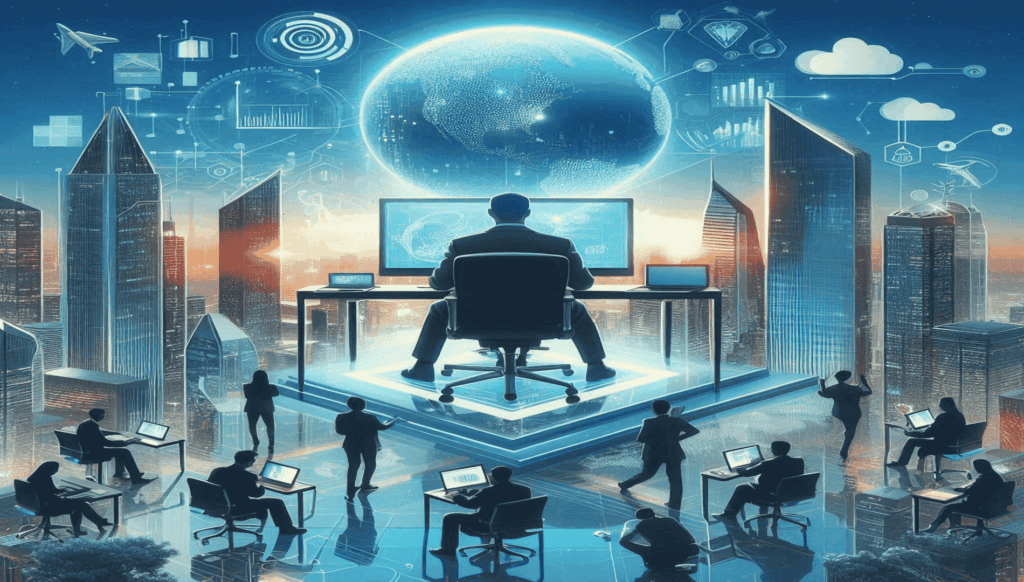
In today’s hyper-competitive business landscape, talent acquisition has evolved from an operational necessity to a strategic imperative. Future workforce development is no longer just about hiring the best candidates; it’s about constructing a resilient workforce capable of driving innovation, adapting to change, and sustaining organizational growth. This new paradigm emphasizes the importance of developing skills and attributes that align with the ever-changing demands of the market, ensuring that organizations remain agile and competitive.
As someone deeply invested in this field, I’ve seen firsthand how the rules of recruitment are evolving. Traditional approaches, though foundational, no longer suffice. The focus has shifted toward building dynamic talent pipelines, leveraging cutting-edge technology, and crafting employer brands that stand out in the crowded labour market. But what does this mean for organizations, and how can they adapt? How can we effectively develop the workforce of the future?
Redefining Talent Acquisition: A Holistic Approach
Talent acquisition today transcends the simple act of filling vacancies. It’s about aligning recruitment efforts with overarching business goals to drive future workforce development. Companies must think beyond the immediate needs and strategically plan for the future. This requires a comprehensive framework built on five interconnected pillars, each critical for the success of future workforce development.
1. Strategic Workforce Planning: The Chess Master’s Perspective
Successful talent acquisition starts with an intimate understanding of organizational goals and workforce requirements. It’s not enough to respond to current needs; companies must anticipate the future. Strategic planning involves mapping out hiring forecasts based on growth objectives, technological advancements, and market trends.
For example, as industries embrace automation and artificial intelligence, roles like data scientists, automation specialists, and AI ethicists are no longer optional—they’re indispensable. Companies that plan for these shifts by identifying future skill requirements and nurturing relationships with potential candidates gain a significant edge over competitors.
2. The Magnetism of Employer Branding
In a world inundated with choices, a strong employer brand can make all the difference. It’s about telling a story—a compelling narrative that showcases your company’s culture, values, and vision. When Bhavish Aggarwal, CEO of Ola, visits India’s top campuses, he’s not just scouting talent; he’s reinforcing the idea that Ola is the place for visionaries.
A robust employer brand serves as a beacon, attracting candidates who align with your ethos. But branding isn’t just external. Your existing employees are your most potent ambassadors. Their testimonials, whether shared on social media or through informal networks, carry immense credibility.
3. Diversity and ESG: Foundations for a Modern Workforce
Diversity and inclusion are no longer optional—they’re essential. Research consistently shows that diverse teams are more innovative and better equipped to solve complex problems. But diversity isn’t just about representation; it’s about creating an environment where everyone can thrive.
This is where Environmental, Social, and Governance (ESG) initiatives come into play. Younger generations, particularly Gen Z, value employers who prioritize sustainability and social impact. Companies aligning their benefits and policies with ESG principles—such as offering eco-friendly commute incentives or transparent pay structures—find themselves better positioned to attract top talent.
4. Harnessing the Power of Technology
Technology is the silent workhorse of modern talent acquisition. From AI-driven sourcing tools that identify high-potential candidates to applicant tracking systems that streamline the recruitment process, technology has revolutionized how companies approach hiring.
Consider this: a mid-sized organization processing thousands of applications can save hundreds of hours using automation. But technology’s role goes beyond efficiency. Predictive analytics can help forecast candidate success, while machine learning algorithms can identify biases in job descriptions, promoting inclusivity.
5. Crafting Unforgettable Candidate Experiences
In a competitive job market, the candidate experience can make or break your hiring strategy. A clunky application process or lack of communication can turn potential hires away faster than you can say “talent shortage.”
On the flip side, companies that prioritize seamless, transparent interactions create a lasting impression. Timely feedback, clear timelines, and even small gestures like personalized thank-you notes can elevate the candidate experience and enhance your employer brand..
Navigating the Challenges of a Tight Labor Market
The labor market is tighter than a drum, with vacancies often outstripping available talent. Aging populations, rapid technological advancements, and shifting worker priorities have created a perfect storm. This is particularly evident in high-demand sectors like healthcare and technology, where finding skilled professionals feels like searching for a needle in a haystack.
Moreover, younger workers bring their own set of expectations. For them, work isn’t just about a paycheck—it’s about purpose, flexibility, and alignment with personal values. This shift has sparked movements like the “Great Resignation,” where employees are leaving roles in search of more meaningful work.
Winning the Talent Wars: Six Proven Strategies
So, how can organizations turn these challenges into opportunities? Here are six actionable strategies:
1. Build Holistic Compensation Packages
Compensation is no longer limited to salaries. Think of benefits like remote work options, wellness programs, and professional development opportunities. These extras often tip the scales in your favor.
2. Embrace Leadership Involvement
CEOs like Deepinder Goyal of Zomato demonstrate that personal involvement in hiring sends a powerful message. It signals to candidates that the company values its talent as much as its bottom line.
3. Cultivate a Talent Pipeline
Networking isn’t just for salespeople. Attend industry events, engage with talent on social media, and maintain relationships with potential hires long before a vacancy arises.
4. Promote Diversity Proactively
Review your hiring practices to eliminate bias, craft inclusive job descriptions, and ensure interview panels reflect the diversity you aim to achieve.
5. Optimize with Data
Track metrics like time-to-hire and quality-of-hire to continuously refine your recruitment strategies. Data is your compass in the often-chaotic world of hiring.
6. Invest in Technology
From chatbots that guide candidates through applications to analytics that predict hiring outcomes, technology is your secret weapon.
Future Workforce Development: The Road Ahead
Talent acquisition is no longer a support function—it’s a strategic driver of organizational success. Companies that embrace its transformative potential will find themselves ahead of the curve, armed with a workforce ready to tackle future challenges.
In my opinion, the key lies in adaptability. Whether it’s embracing new technologies, redefining leadership roles, or fostering diversity, the ability to evolve will separate the winners from the also-rans. So, what’s your next step in this journey? Let’s connect and brainstorm how to future-proof your talent acquisition strategy.
Reference
AiGroup: How talent acquisition is shaping the future of recruitment
Ius Laboris: Workforce of the future: Attracting and retaining talent in a changing labour market.

Ajay Dhage is a seasoned Talent Acquisition leader with over 20 years of experience in recruitment and workforce strategy. Currently serving as the Talent Acquisition Lead for a global Oil & Gas EPC Company in India, ajay oversees the entire talent acquisition lifecycle across diverse and complex projects, from sourcing to onboarding and aligning top talent with complex organizational goals. With a proven track record in industries such as oil and gas, EPC, and renewables, he brings a customer-focused approach and innovative mindset to every project.
Through ajayable.com, ajay aims to share insights, trends, and strategies to empower HR professionals, Organizations and recruiters to excel in a competitive talent landscape.



